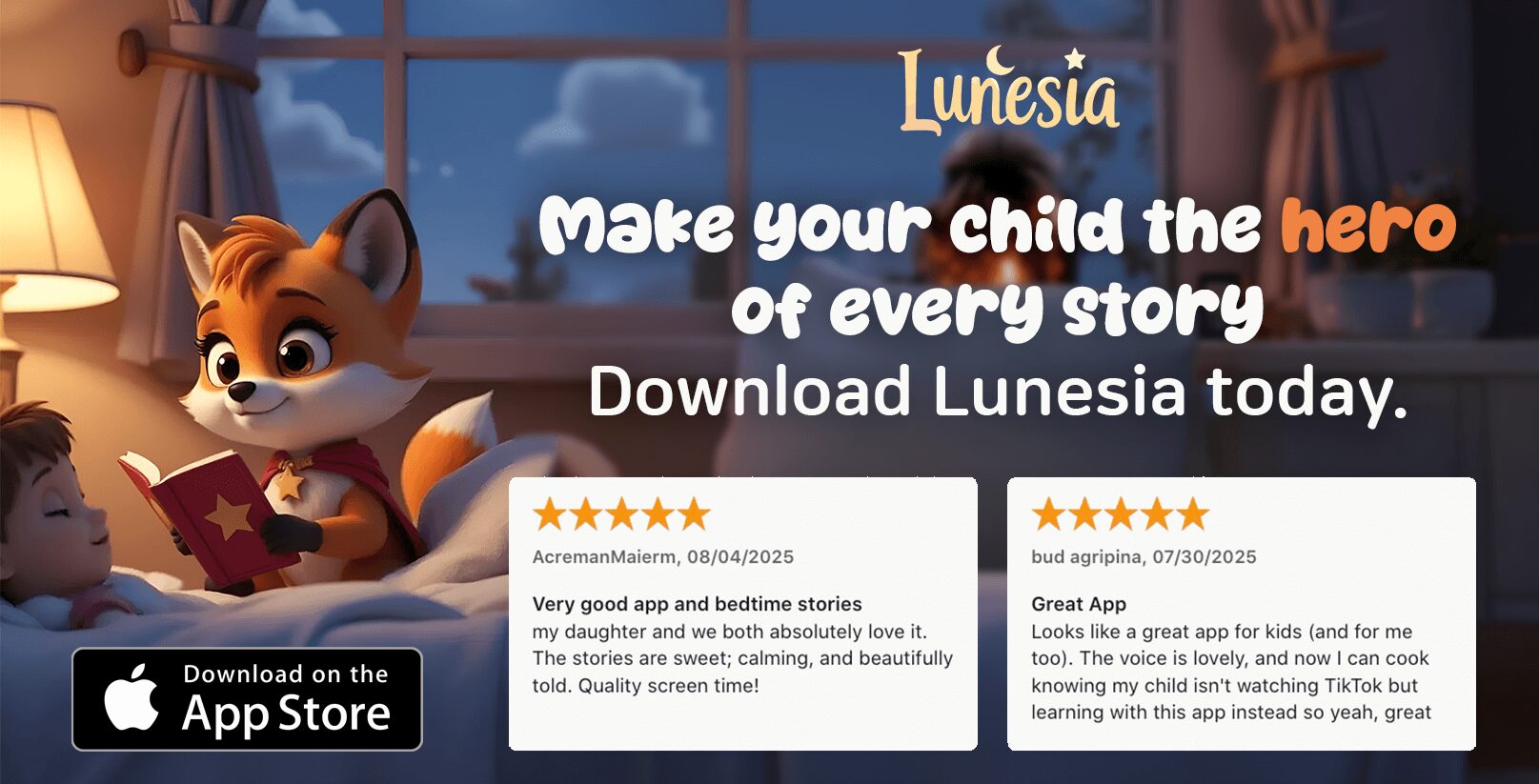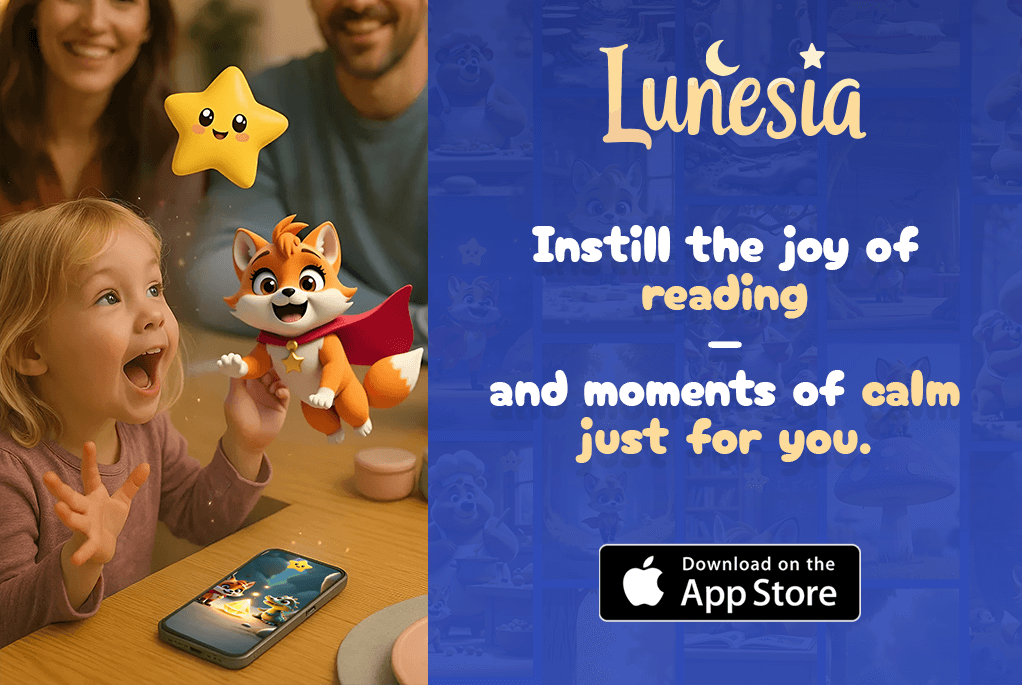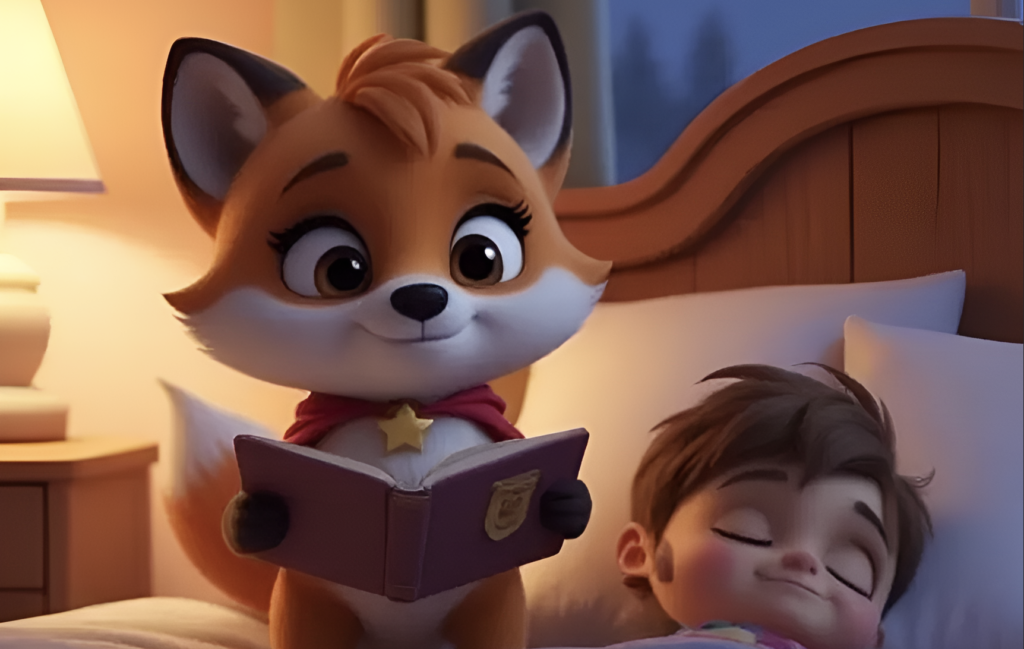As a mom, I’ve seen firsthand how crucial early education is for a child’s development. With technology becoming an integral part of our kids’ lives, educational apps have emerged as a valuable tool for learning. But with so many options available, choosing the right one can be overwhelming.
I’m here to help you make an informed decision by comparing two popular educational apps for preschoolers: Lunesia and Kiddopia. Both have gained popularity among parents seeking quality educational content for their children, but they differ in several key areas.
In this comparison, we’ll explore everything from curriculum content to user experience, helping you determine which app aligns better with your child’s learning style and your educational priorities.
Understanding Educational Apps for Preschoolers
Educational apps designed for preschoolers have gained significant attention in recent years, promising to enhance early childhood education. As a parent, you’re likely eager to understand how these digital tools can support your child’s learning journey.
The Growing Importance of Digital Learning Tools
Digital learning tools have become increasingly important in early childhood education. Research shows that quality educational apps can support cognitive development when used appropriately. I’ve observed how these apps have evolved from simple games to comprehensive learning platforms covering multiple developmental areas. For instance, many apps now offer a range of activities that cater to different aspects of a child’s development, from literacy and numeracy to critical thinking and problem-solving skills.
Key Features Parents Should Look For
When evaluating educational apps for your kids, there are several key features to consider. Look for apps with age-appropriate content, engaging but not overstimulating design, and features that encourage active rather than passive learning. The best educational apps for preschoolers strike a balance between entertainment and educational value, providing opportunities for children to develop foundational skills. For more insights, you can explore resources like top educational apps for preschoolers. Parents should also consider apps that offer progress tracking, parental controls, and content aligned with established early learning standards.
| Feature | Importance | Benefits |
|---|---|---|
| Age-appropriate content | High | Ensures relevance and safety |
| Engaging design | Medium | Maintains child’s interest |
| Progress tracking | High | Helps parents monitor child’s development |
| Parental controls | High | Allows parents to manage usage |
Lunesia: A Comprehensive Overview

In the vast landscape of educational apps, Lunesia stands out for its tailored approach to early childhood learning. As a comprehensive learning app designed specifically for preschool-aged children, Lunesia offers a unique blend of engaging content and adaptive technology.
Core Educational Content and Curriculum
Lunesia’s curriculum is designed to cover essential early learning areas, including alphabet recognition, phonics, early reading skills, number concepts, and basic problem-solving. The app’s core educational content is both comprehensive and engaging, ensuring that children stay motivated to learn. By incorporating a play-based learning approach, Lunesia makes educational content feel like fun exploration rather than structured lessons.
Age Range and Learning Approach
Lunesia is designed for children ages 2-7, with different difficulty levels that grow with your child as they develop new skills and knowledge. The app’s adaptive learning technology adjusts the difficulty level based on how your child interacts with the activities, creating a personalized learning path that suits their individual learning pace and style.
Unique Features and Selling Points
One of Lunesia’s unique selling points is its focus on developing executive function skills like attention, memory, and self-regulation through carefully designed activities. The program includes interactive stories, games, and creative activities that encourage both independent learning and opportunities for parents to participate alongside their child. By visiting Lunesia’s website, you can learn more about how the app can support your child’s learning journey.
Kiddopia: A Comprehensive Overview
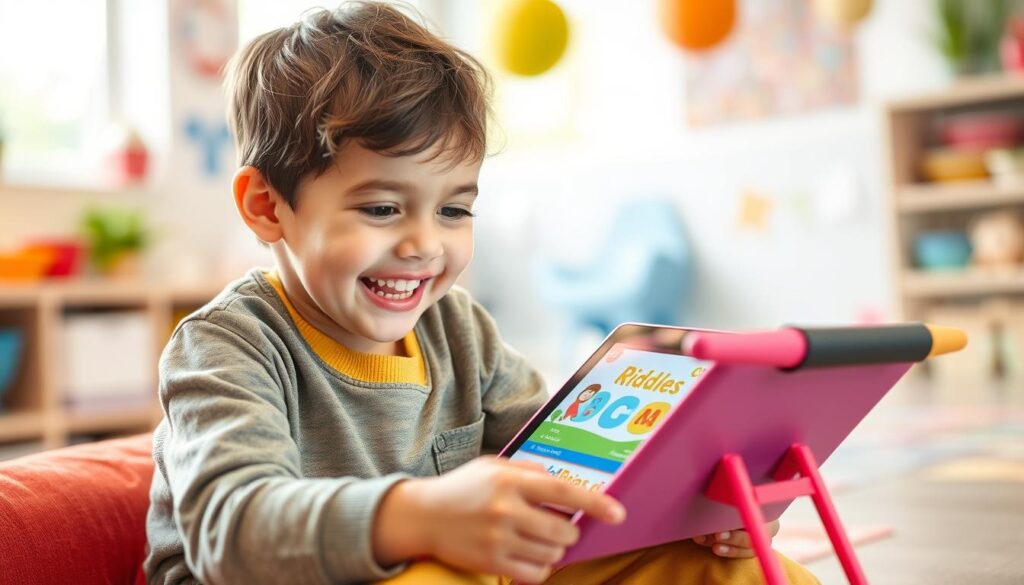
As an award-winning educational app, Kiddopia has garnered attention for its innovative approach to early childhood education. This app is designed to provide a comprehensive learning experience for young children, focusing on various essential skills.
Core Educational Content and Curriculum
Kiddopia’s curriculum is comprehensive, covering early literacy, numeracy, general knowledge, creativity, and social-emotional learning through interactive games and activities. The app features a variety of mini-games that teach different skills, from alphabet recognition and counting to problem-solving and creative expression. This approach ensures that children are engaged while developing crucial learning skills.
Age Range and Learning Approach
Kiddopia is primarily designed for kids aged 2-7, with a particular focus on 3-5 year olds who are preparing for kindergarten. The app’s content is tailored to this age group, using a learning approach that is both fun and educational. By incorporating games and interactive elements, Kiddopia makes learning an enjoyable experience for young children.
Unique Features and Selling Points
One of Kiddopia’s standout features is its ability to balance educational content with entertainment value. The app’s engaging characters and scenarios make it a favorite among young users. Additionally, Kiddopia includes a reporting dashboard that allows parents to monitor their child’s progress, providing insights into areas where they need more practice. Regular updates with new content and activities ensure that the app remains fresh and challenging for its users.
Kiddopia has established itself as a popular educational app for preschoolers, offering a colorful and engaging interface. By focusing on key areas such as literacy, numeracy, and social-emotional learning, Kiddopia provides a well-rounded learning experience. As a result, it has become a trusted choice among parents seeking high-quality educational apps for their kids.
Content Quality Comparison: Lunesia vs Kiddopia
Both Lunesia and Kiddopia are renowned educational apps, but a closer look at their content quality reveals distinct approaches to learning. As a parent, understanding these differences is crucial in choosing the right app for your child’s educational needs.
Subject Coverage and Educational Value
Lunesia and Kiddopia offer rich educational experiences, but with different emphases. Lunesia tends to have more structured learning pathways with clearer educational objectives, while Kiddopia offers a more exploratory approach. In terms of subject coverage, Kiddopia offers a broader range of topics including math, reading, science, and creative arts, whereas Lunesia provides deeper coverage in core literacy and numeracy skills.
For instance, Kiddopia’s curriculum includes cultural and language learning elements, exposing children to a broader world of knowledge. On the other hand, Lunesia excels in foundational skills development, making it an excellent choice for parents focusing on basic literacy and numeracy.
Engagement and Entertainment Factor
Both apps incorporate elements of fun and play, but they differ in their approach. Kiddopia leans more heavily on entertainment with its colorful characters and game-like activities, making learning feel like playtime. Lunesia, however, maintains a stronger focus on educational outcomes, ensuring that the content remains engaging while being informative.
The quality of voice acting, animations, and interactive elements is high in both apps, though they employ different aesthetic styles that may appeal to different children. As one educational expert notes, “The key to a successful educational app is its ability to balance fun and learning.”
“The key to a successful educational app is its ability to balance fun and learning.”
Content Updates and Freshness
Lunesia updates its content on a quarterly basis with new learning modules, providing a consistent flow of fresh content. Kiddopia, on the other hand, adds new games and activities more frequently, though sometimes with less educational depth. This difference in update frequency and content depth is crucial for parents to consider, depending on whether they prefer a steady stream of new content or more in-depth learning experiences.
User Experience Face-Off
A well-designed user experience can make or break the success of an educational app for kids. As we dive into the user experience of Lunesia and Kiddopia, it’s clear that both apps have their strengths and weaknesses.
Interface Design and Ease of Navigation
Lunesia features a streamlined, minimalist interface that many children find easy to navigate independently. In contrast, Kiddopia’s vibrant, character-filled design is more visually engaging but can be overwhelming for some users. While both apps offer child-friendly navigation, Lunesia’s linear progression makes it easier for children to follow a learning path, whereas Kiddopia’s open-world approach gives kids more freedom to choose activities.
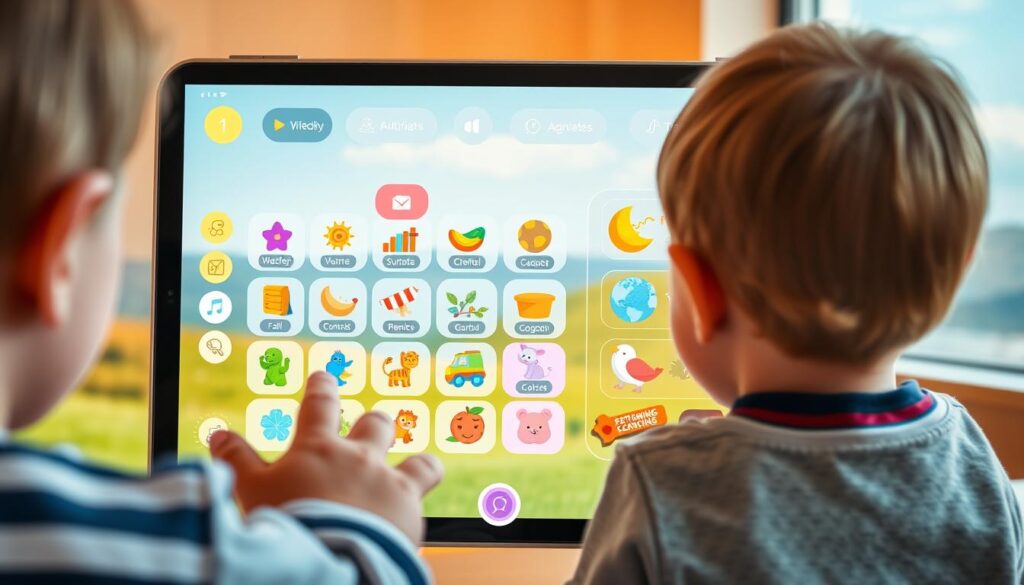
Parental Controls and Monitoring Features
When it comes to parental controls, Lunesia offers more granular options for customizing content and limiting screen time. On the other hand, Kiddopia provides better reporting on usage and learning progress, giving parents a clearer picture of their child’s engagement. Both apps cater to parents’ needs, but in different ways.
Performance and Technical Aspects
Technical performance is generally solid for both apps, though Lunesia tends to have fewer crashes and faster loading times. Kiddopia’s app size is considerably larger, which may be a consideration for parents with limited device storage. A comparison of key technical aspects is shown below:
| Feature | Lunesia | Kiddopia |
|---|---|---|
| App Size | Smaller | Larger |
| Offline Play | More complete functionality | Limited functionality |
| Loading Times | Faster | Slower |
Pricing and Subscription Models
Before committing to an educational app, it’s vital to understand the pricing and subscription models, especially for popular options like Lunesia and Kiddopia. As a parent, you want to make informed decisions about your child’s learning resources.
Lunesia’s Pricing Structure
Lunesia offers a tiered subscription model that includes monthly, quarterly, and annual options. The annual plan typically provides the best value, costing approximately $5-7 per month. One of the key benefits of Lunesia’s pricing structure is that it covers up to three child profiles, making it a cost-effective option for families with multiple children. You can try Lunesia risk-free with their 7-day free trial.
Kiddopia’s Pricing Structure
Kiddopia follows a similar subscription-based approach, with prices ranging from $6-8 per month depending on the subscription length. While Kiddopia is slightly more expensive than Lunesia on average, it offers a 14-day free trial, giving you more time to assess whether the app is right for your child. However, it’s worth noting that Kiddopia charges extra for additional profiles beyond the primary account.
Value for Money Analysis
When analyzing the value for money, I consider not just the price but also the amount of content, frequency of updates, and longevity of use. Both Lunesia and Kiddopia offer high-quality educational content, but the key is to determine how long your child will continue to benefit from the app before outgrowing it. Here are some key points to consider:
- Both apps offer a free trial period, allowing you to test their features before committing.
- Lunesia’s pricing is more economical for families with multiple children due to its inclusive profile policy.
- Kiddopia’s slightly higher price is offset by its engaging content and regular updates.
Ultimately, the decision between Lunesia and Kiddopia will depend on your child’s individual needs and your budget. By considering the pricing models and the value they offer, you can make an informed decision that supports your child’s learning journey.
Learning Outcomes and Effectiveness
As a parent and early childhood education enthusiast, I’ve delved into how effectively Lunesia and Kiddopia translate engagement into actual learning outcomes for kids. Both apps have garnered attention for their innovative approaches to preschool education, but it’s crucial to examine their impact on young learners.
Skill Development Comparison
Lunesia’s systematic approach to skill development is particularly noteworthy, as it aligns with early learning standards and effectively builds foundational reading and math skills. In contrast, Kiddopia excels in fostering a broader range of skills, including creativity and social-emotional learning, which are equally vital for early childhood development. The table below summarizes the key differences in their skill development approaches.
| Skill Development Aspect | Lunesia | Kiddopia |
|---|---|---|
| Foundational Skills | Strong focus on reading and math | Emphasis on creativity and social-emotional learning |
| Learning Approach | Systematic and structured | Exploratory and interactive |
| Early Learning Standards | Aligned with standards | Focus on broader skill development |
Progress Tracking and Assessment
The progress tracking features in both apps offer valuable insights into a child’s learning journey. Lunesia provides detailed insights into specific skills mastery, while Kiddopia offers a more general overview of activity completion and time spent in different learning areas. This difference can significantly impact how parents and educators assess a child’s progress.
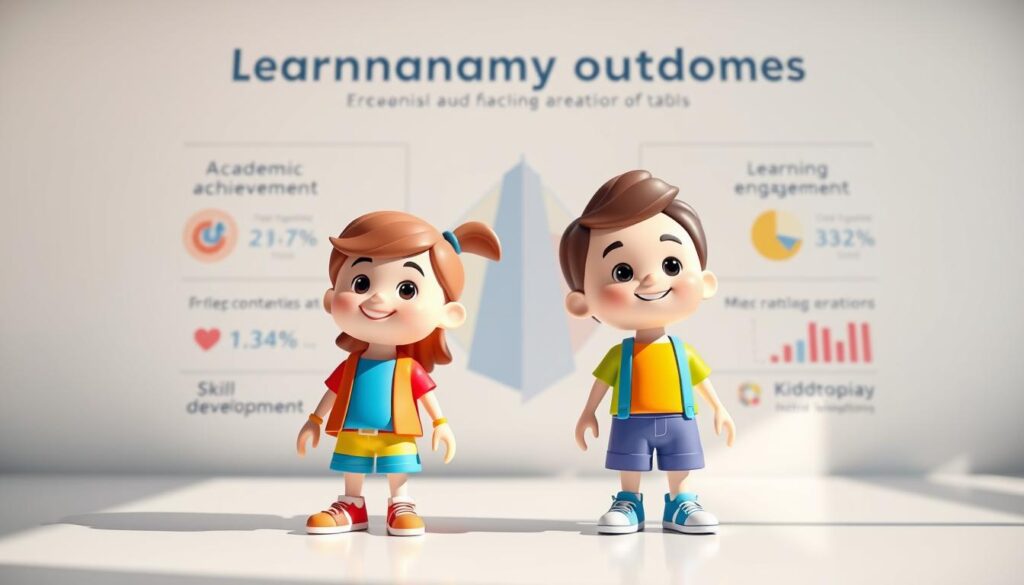
Parent and Educator Feedback
Feedback from both parents and educators suggests that children who regularly use Lunesia often demonstrate stronger academic readiness, particularly in reading and number recognition. Educators appreciate how both apps can supplement classroom learning, with many favoring Lunesia for its clearer connection to early learning standards and skill progression. Ultimately, the effectiveness of either app depends on the individual child’s learning style and developmental needs.
Pros and Cons: Lunesia vs Kiddopia
Let’s dive into the advantages and disadvantages of Lunesia and Kiddopia, two popular educational apps for preschoolers. Understanding the strengths and weaknesses of each app is crucial for making an informed decision about your child’s educational journey.
Lunesia’s Strengths and Weaknesses
Lunesia excels with its structured learning approach and clear skill progression, making it ideal for parents who prioritize academic readiness. Its focus on reading fundamentals is particularly noteworthy, with systematic phonics and letter recognition that lay a solid foundation for early literacy skills. Additionally, Lunesia’s parental controls are comprehensive, allowing parents to monitor their child’s progress effectively.
However, Lunesia’s more serious educational focus means it has fewer purely fun games, which might lead to less engagement for some children. As one educational expert notes, “A balanced approach to learning should include both structured education and engaging activities.” Lunesia’s interface also lacks the character-driven appeal that many kids enjoy.

Kiddopia’s Strengths and Weaknesses
Kiddopia shines with its vibrant, engaging design and wide variety of activities, including puzzles and creative games. This makes it particularly appealing to children who might be resistant to more obviously educational content. Kiddopia’s focus on creative expression and interactive storytelling that incorporates sounds and music is also a significant advantage.
However, Kiddopia’s learning pathways are less structured, and it offers fewer features for tracking specific skill development. Sometimes, it prioritizes entertainment over educational depth, which can be a drawback for parents seeking a more academically rigorous app. For children who love animals and nature-themed content, Kiddopia offers more engaging games featuring various animals and environments.
In conclusion, both Lunesia and Kiddopia have their strengths and weaknesses. Lunesia is ideal for parents who prioritize academic readiness and a structured learning approach, while Kiddopia excels in engaging children with its vibrant design and creative activities. Ultimately, the choice between these two apps depends on your child’s individual needs and your educational priorities.
Conclusion: Making the Right Choice for Your Child
Choosing the right educational app for your child can be a daunting task, but with the right guidance, you can make an informed decision. As a parent, you want the best for your kid, and selecting the perfect educational app is crucial for their learning journey.
When deciding between Lunesia and Kiddopia, consider your child’s learning style and interests. If your kid responds better to structured learning with clear progression, Lunesia may be the better choice. On the other hand, if your child needs more engagement and fun to maintain interest in learning activities, Kiddopia might be the way to go.
Think about your educational priorities – are you looking for an app that closely aligns with classroom curriculum and school standards, or one that supplements traditional learning with creative activities? Don’t overlook the importance of trying before committing – take advantage of the free trials both apps offer.
Remember, the best educational app is ultimately the one your child will actually use consistently over time. In my experience working with many families, I’ve found that some parents even choose to use both apps at different times or for different purposes.
By considering your child’s unique needs and preferences, you can make an informed decision and choose the app that will provide them with the best possible learning experience. Whether you choose Lunesia, Kiddopia, or both, the most important thing is to find an app that sparks your child’s curiosity and love for learning.
FAQ
What are the benefits of using educational apps for preschool learning?
Educational apps can help develop essential skills like reading, writing, and math, while fostering creativity and problem-solving abilities in young children.
How do I choose the best educational app for my child?
Consider your child’s age, learning style, and interests when selecting an app. Look for apps that offer a balanced mix of fun and education, with features like progress tracking and parental controls.
Are educational apps a replacement for traditional teaching methods?
No, educational apps are meant to supplement traditional teaching methods, not replace them. They can be a valuable tool for parents and educators to provide additional learning opportunities.
Can educational apps help my child develop social skills?
Some educational apps, like Kiddopia, focus on social-emotional learning, helping children develop essential social skills like cooperation, empathy, and self-awareness.
How can I ensure my child’s safety while using educational apps?
Look for apps with robust parental controls, monitor your child’s activity, and set limits on screen time to ensure a safe and healthy learning experience.
What subjects do educational apps typically cover?
Educational apps often cover a range of subjects, including math, language, reading, science, and art, with some apps specializing in specific areas like phonics or coding.
Can educational apps be used in the classroom?
Yes, many educational apps are designed for classroom use, providing teachers with a valuable tool to engage students and support curriculum goals.
How often are educational apps updated with new content?
Reputable educational apps, like Lunesia, regularly update their content to keep learning fresh and engaging for young users.

